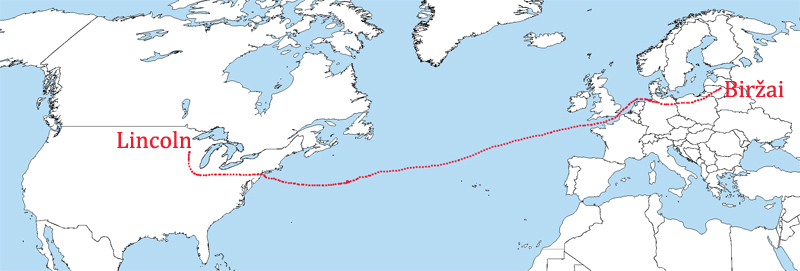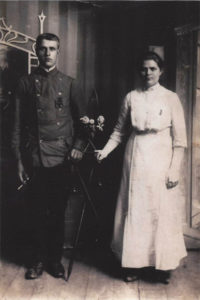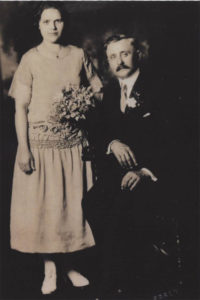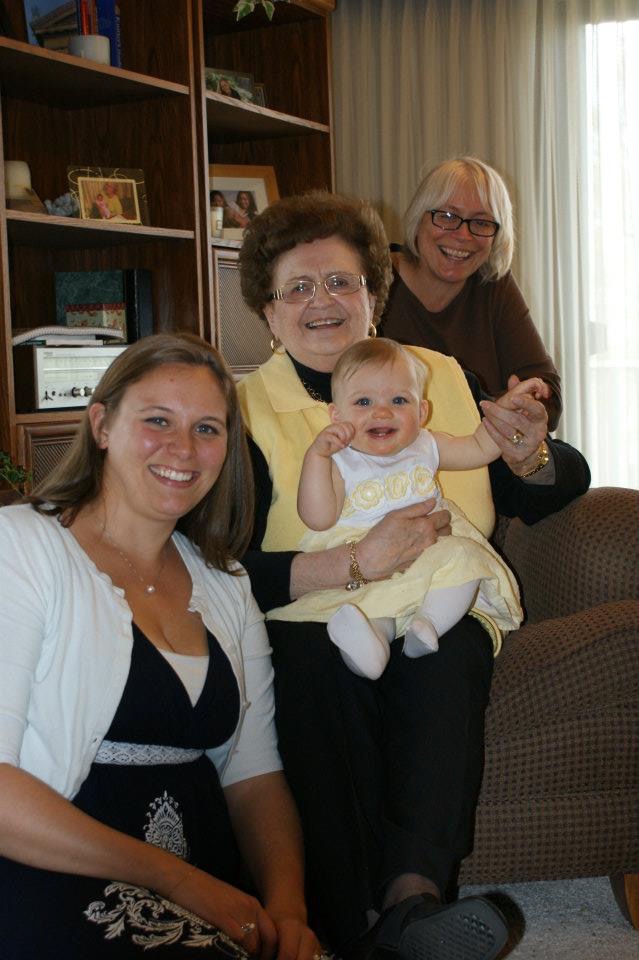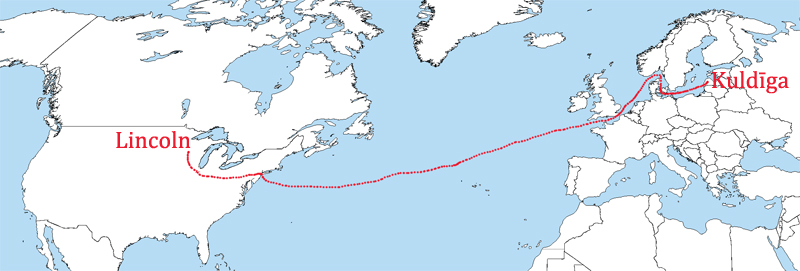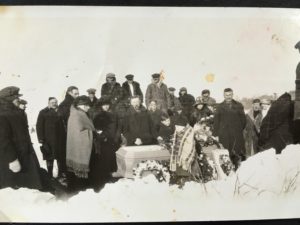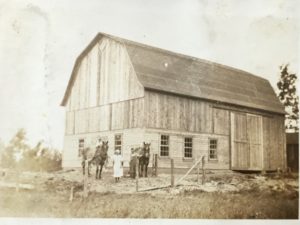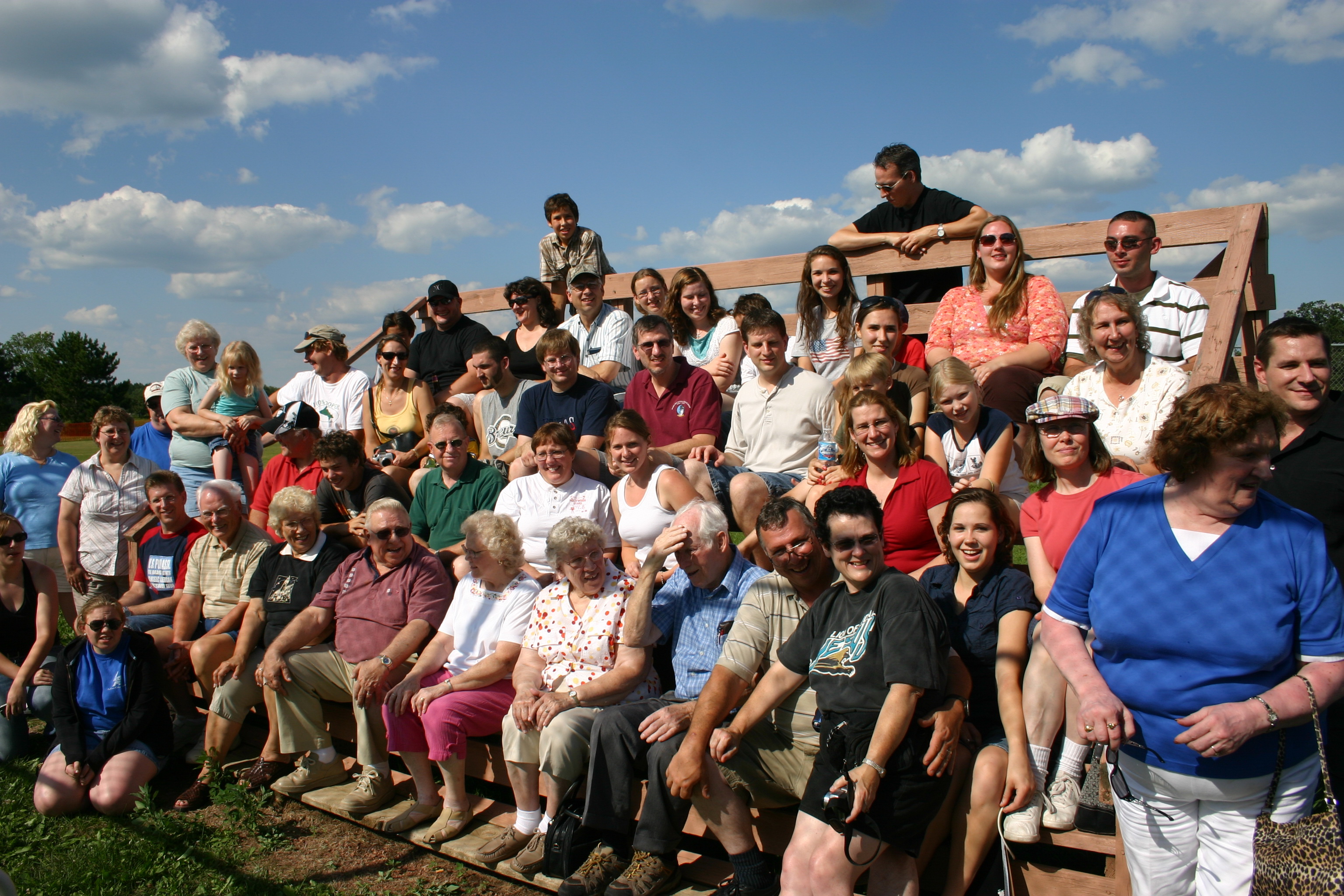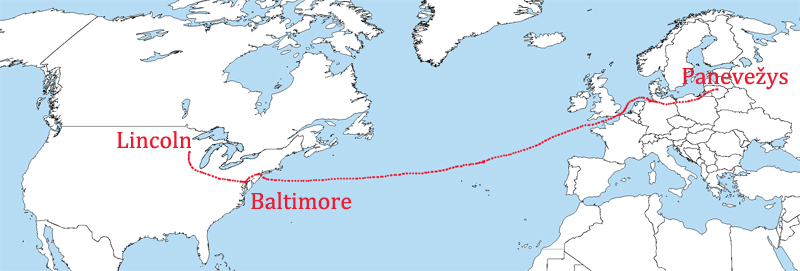
Life in the homeland
The precise place of origin for the Krauklis family is not known. According to the documentary evidence, the Krauklis family, and related Smēdulis (Smedul) and Zīberts (Siebert) families, are from Panevežys district in modern-day Lithuania. At the end of the 19th century, approximately 7% of Panevežys district was Latvian. As can be seen on the map, it is clear that most Latvian communities that ended up in the US and later in Lincoln had origins in the border districts. The older generations, those who had immigrated to the US, rarely talked about life in Europe, and, if they did discuss such matters amongst themselves, they would do so in Latvian, so that the younger generations would not understand.
Jānis and Lavīze Krauklis were married in approximately 1866. They had ten children, of whom three died in infancy. The first to leave for the US was eldest daughter Lavīze, who was by this time married to Jurģis (George) Smēdulis and had a daughter, Amālija. The Smēdulis family was accompanied on their journey by Lavīze’s 20 year old brother Jurģis (George) and 9 year old sister Minna, who was registered in the Hamburg passenger lists as another daughter of Lavīze.
Travel and Arrival in the USA
The Smēdulis family, along with Jurģis and Minna Krauklis, departed from Hamburg on the ship Moravia. They arrived in New York on June 9, 1891, where they were processed through the Castle Garden Immigration Depot – New York’s immigration centre prior to the opening of Ellis Island. Their residence in Europe was shown as Kaunas, and their destination as Boston.
Jurģis Kraulis’ first work in Baltimore was in box-making.
In the fall of 1891, Jurģis’ future wife, Lavīze Zīberts (nee Kalniņš) arrived in New York with her husband Jānis, son Adolf and daughter Amālija. The Zīberts also headed to Baltimore, where in 1892 they welcomed another daughter, Emma. Jānis died suddenly in 1894, and Lavīze was so heartbroken, that the following year, on the anniversary of his death, she published a poem (possibly self-composed) in the Baltimore Sun in his memory:
O when the day on which he died
Comes circling around through all the years
I can but think how lone and wide,
How cold and dark the world appears.
Poor heart, what hope hast thou perceived,
That still thy pulses beat so strong;
I did not think I could have lived
Apart from him so long – so long.
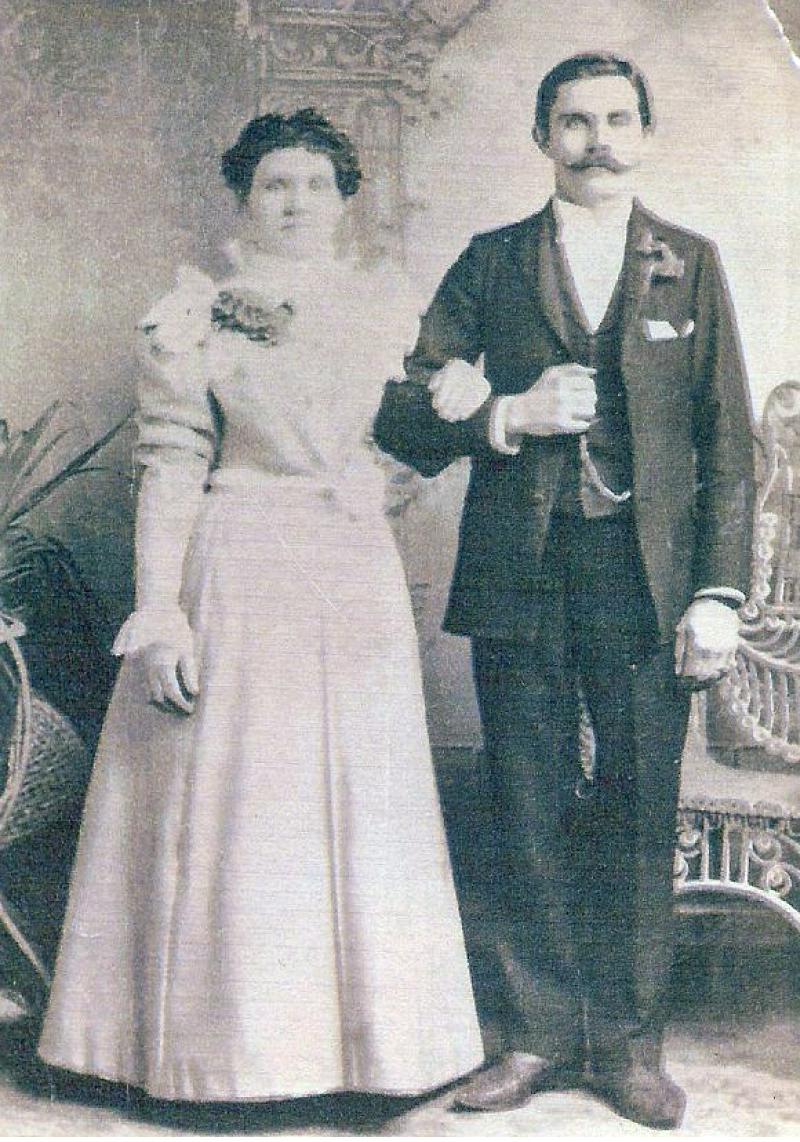
Marriage of Jurģis Krauklis and Lavīze Zīberts (nee Kalniņš) in Baltimore, 1898.
It is unknown when Jurģis Krauklis and widow Lavīze Zīberts met, but they married in 1898 in Baltimore and the following year welcomed their first daughter Jūlija.
1899 was an important year for the Krauklis and Smēdulis families. More Krauklis family members arrived in 1899: sister Amālija, brothers Jūlijs and Kārlis, and mother Lavīze, who was listed as a widow. It is unknown when her husband died. In this same year, Jurģis Smēdulis was the first of the family to head to Wisconsin. He had heard about the good prices for land in Lincoln, and thus headed there on his own and was later joined by his family.
Life in Wisconsin
Jurģis, Jūlijs and Kārlis Krauklis arrived in Lincoln before 1901. By 1905, all of the family had moved to Lincoln with the exception of Jurģis’ stepdaughter Amālija Zīberts, who married in 1906 in Baltimore and stayed there with her husband.
Life in the virgin forests was not easy, but Latvians were strong and tenacious, and they were not worried about the harsh conditions. A family story illustrates this tenacity: In November of 1903, Jurģis and Lavīze Krauklis were awaiting their first son, Georgs. On that day, Lavīze, preparing for the cold winter ahead, was splitting firewood, when she felt labour pains coming on. She went up onto the porch, gave birth to the baby, wrapped him in a blanket and tucked him behind the stove to keep warm – and then went back outside to finish up with the firewood!
The Krauklis family earned good money from selling the logs cut down in the forest, and after the forest was cleared they were able to start using the land for farming. They built a barn and bought several cows.
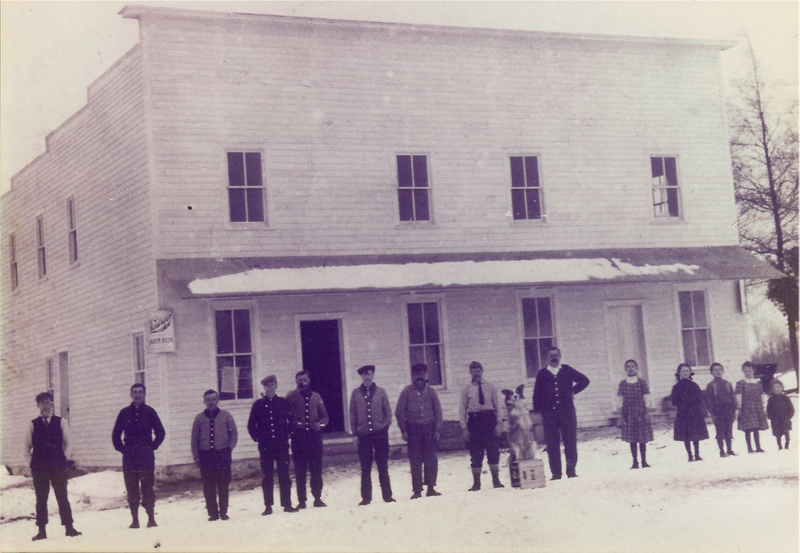
Second Krauklis saloon and hotel in Lincoln, winter of 1910-1911. Workers to the left of the dog, to the right – Jurģis, daughters Jūlija and Leona, son Jurģis (George), daughter Minna and son Albert.
Around 1908, Jurģis had the opportunity to buy a saloon not far from a growing logging worker community, and the family moved there. In 1910, they lost the saloon and hotel in a devastating forest fire that ravaged the area, and had to move back to the farm until they were able to rebuild and return to the saloon.
In 1912, Jurģis suffered a massive stroke, and could not walk for two years. He slowly regained the ability to walk, but never recovered fully, and died at the age of 62, 21 years after the stroke.
When the family lost the saloon in yet another fire, the family moved back to the farm permanently. After Jurģis’ and Lavīze’s children grew up, they headed out of the community, living in Baltimore and Chicago, and occasionally returning home to Lincoln County.
Family Today
The Krauklis family has many descendants in the US, and the family historian Jeff Krauklis is a professional musician and teacher. Jeff writes, “Working on genealogy, I’ve learned how fragile life and its relationships are. My Latvian ancestors not only survived, they persevered. If any of them along the way had taken the path of least resistance, there’s no way I’d be here today.”
